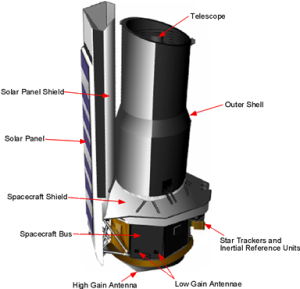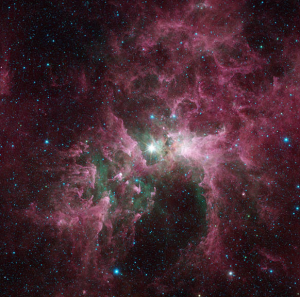Peter Lobner
Updated 19 February 2020
The Spitzer Space Telescope, an infrared space observatory, was launched on 8 August 2003 into an “earth-trailing” orbit around the Sun. It is one of four “Great Observatories” launched by NASA; the others being the Hubble Space Telescope, the Compton Gamma-ray Observatory; and the Chandra X-ray Observatory.
The primary mirror is 85 cm in diameter, made of beryllium, and until May 2009, was cooled by liquid helium to 5.5 degrees K. With the on-board liquid helium supply exhausted, most of the instruments were no longer usable. However, the two shortest wavelength modules of the Infrared Science Archive (IRAC) camera remained operable at their original sensitivities. This allowed the mission team to continue with the “Spitzer Warm Mission”.
You can read about the design of the Spitzer Space Telescope at the following link:
An example of an image from the Spitzer Space Telescope is this view of Eta Carinae:
You can see this and many other images from the Spitzer telescope, and related image data, at the following NASA / JPL / Caltech website:
http://www.spitzer.caltech.edu
Update 19 February 2020
On 30 January 2020, NASA reported,
“After more than 16 years studying the universe in infrared light, revealing new wonders in our solar system, our galaxy and beyond, NASA’s Spitzer Space Telescope’s mission has come to an end…..the spacecraft was placed in a safe mode, ceasing all scientific operations.”
You can read the NASA announcement and a summary of the accomplishments of the Spitzer mission here:

